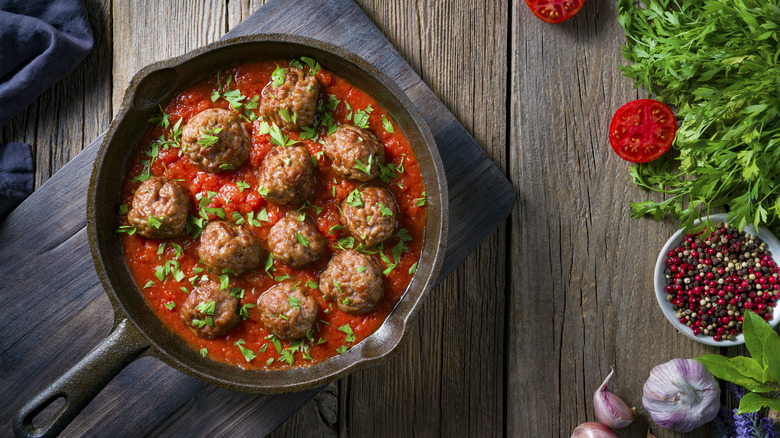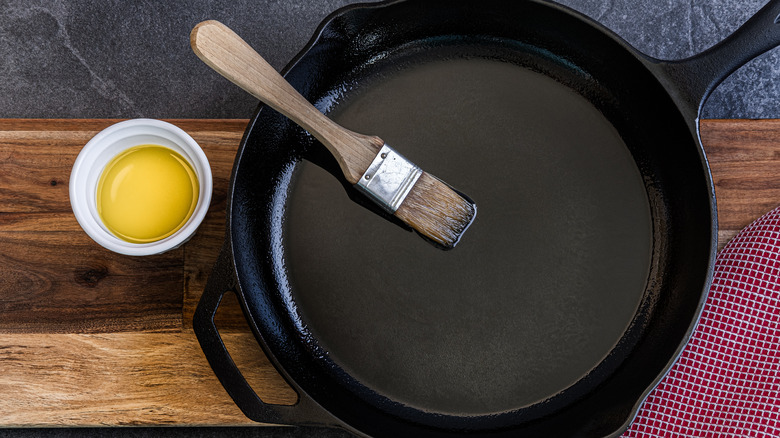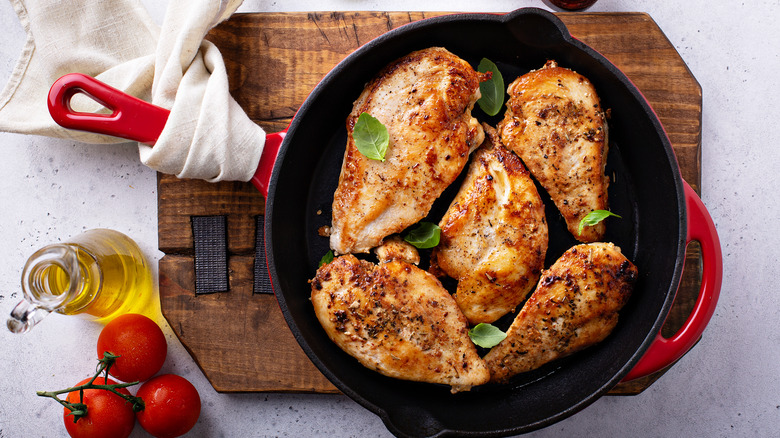Why You Should Be Careful Cooking Acidic Food In Cast Iron
When it comes to reliable cookware, it's hard to beat good cast iron. A quality cast iron pan or casserole dish can remain in families for generations when properly cared for. However, although cast iron is a faithful kitchen companion, not all ingredients play nice with it. Take acidic foods, for example. There's a very good reason why cooking tomatoes in a cast iron skillet is not recommended.
Tomatoes, citrus juices, wine, and vinegar are all quite acidic, which can have an unwanted effect on cast iron. The high acid content of these and other foods can cause minuscule traces of metal to break loose and get in foods. Although such a small amount of metal isn't harmful to your health, it can leave food tinged with a metallic flavor. Also, it doesn't take long for metal leaching to occur, as you may notice unwanted flavors after just 30 minutes of cooking. This doesn't mean cast iron should never meet acidic ingredients, but that their interactions should be short and supervised.
How to safeguard cast iron cookware from acids
Enameled cast iron cookware is best when using acidic ingredients, as the enamel coating prevents acids in food from permeating the iron. If you don't have enameled cast iron cookware, don't fret. And don't run out to buy any, either, because it's possible to cook acidic ingredients in regular cast iron, provided that you do so mindfully. Cooking time is of utmost importance – keep it brief, less than 45 minutes total. Any more time than that allows the acids in foods such as lemon juice, wine, tomatoes, and other ingredients to wreak havoc on cast iron and unleash that unpleasant metallic taste. Check your recipe before getting started to determine whether the cooking time for acidic components is suited to cast iron.
Knowing how to properly season cast iron cookware is also beneficial, as a properly seasoned skillet or dish is less likely to break down when acidic ingredients are introduced. "Seasoning" results from a combination of oil and heat, which creates a protective coating on the surface of cookware. When it comes to the best oil for seasoning cast iron, look for something with a high smoke point to ensure a strong bond. As for frequency, try to season the cast iron once a month to keep the non-stick surface intact.
Myth busting and meal suggestions for cast iron
Avoiding acidic ingredients is but one of many common myths about cast iron cookware. Another is that you can't use metal utensils in the cookware. Metal utensils may affect the skillet's protective seasoning, but simply reseasoning the cookware will resolve that issue. Similarly, it's fine to wash cast iron with soap, as long as you don't submerge it in water for an extended period. Although you must indeed exercise caution when cleaning or cooking acidic elements in your cast iron, the right steps can keep your meals flavorful and your favorite cookware in amazing condition.
From cornbread to cookies, there are a lot of satisfying cast iron recipes perfect for making a filling breakfast, brunch, dinner, and even dessert. Along with being right at home on a stovetop, cast iron cookware can also be used in the oven. The variety of recipes and uses, along with the longevity of cast iron, highlights just how versatile cast iron cookware is.


